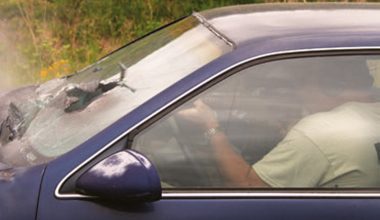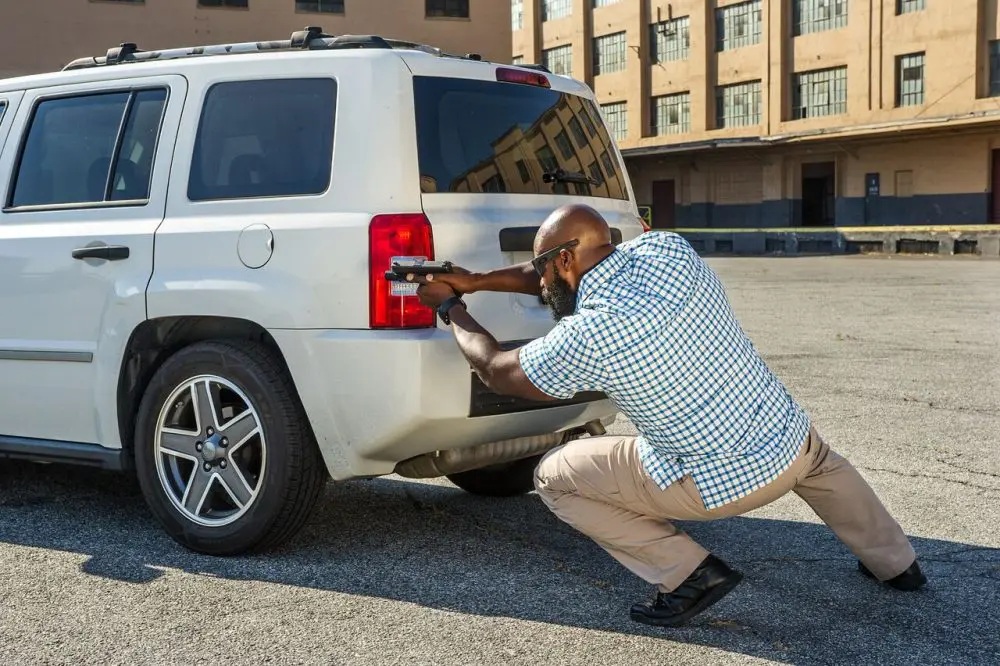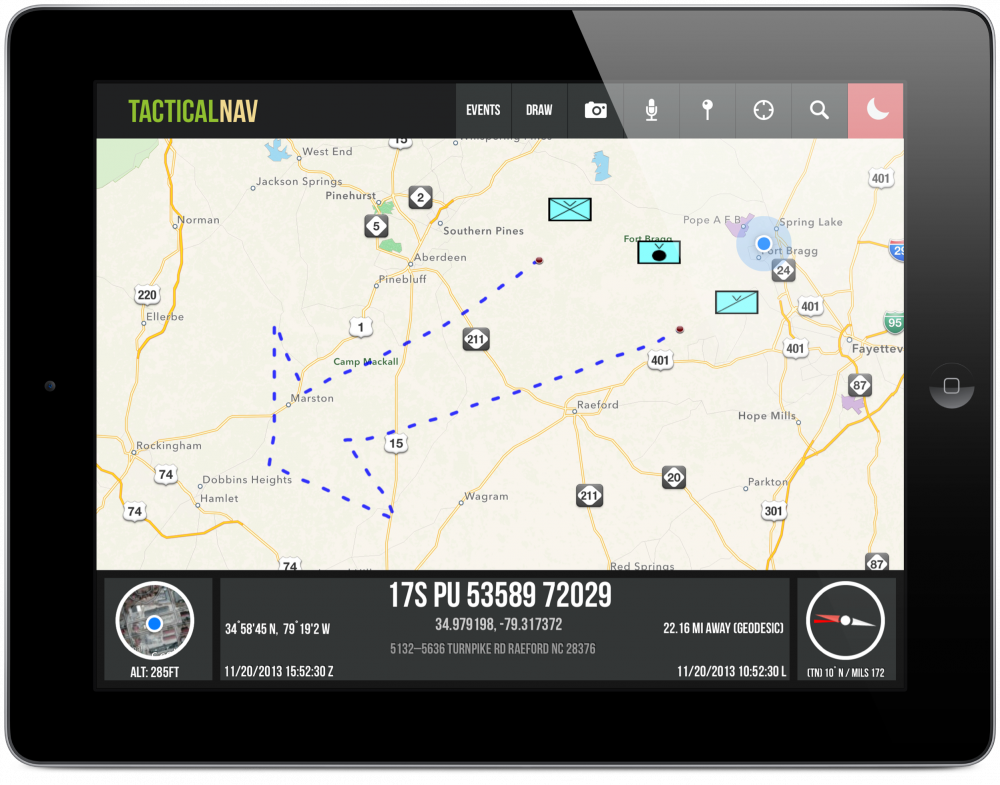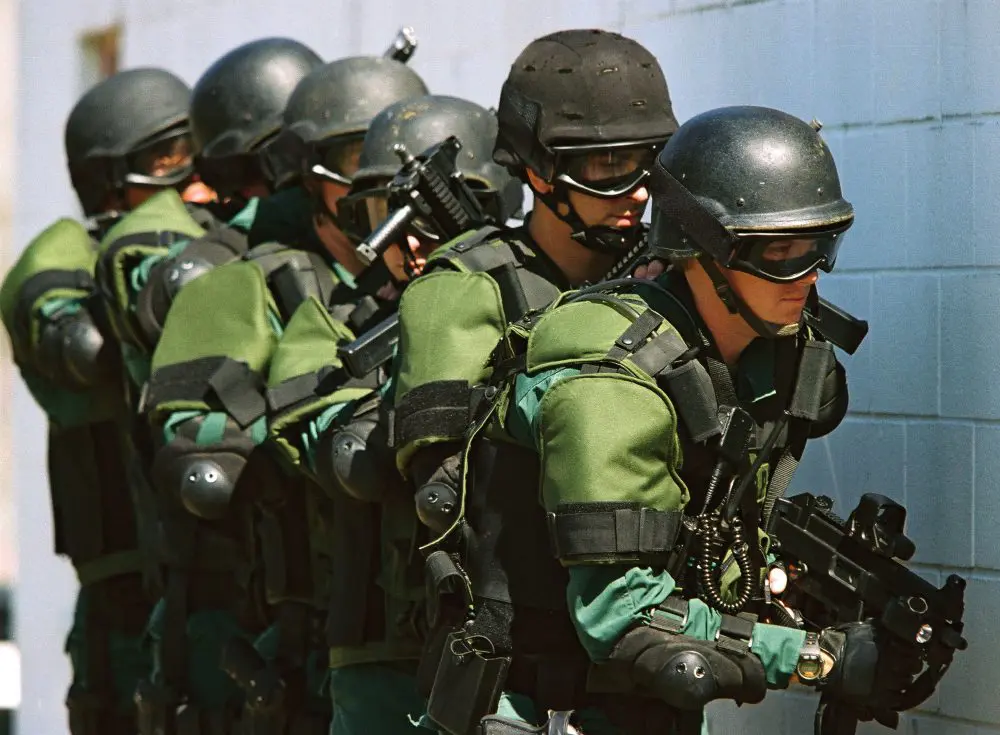“Beware of the man, not the weapon.”
This adage has held true since time immemorial, and will predominantly decide who will be the victor and who will be the vanquished in a rencounter. This having been said, however, there is no question that the right equipment for the right job is a huge bonus. Even if you have no “inanimate” weapon such as a blade or firearm, engaging in fisticuffs (or footicuffs, for that matter) may win the contest, but fighting with broken knuckles isn’t exactly conducive to power punches and kicks.
Let’s face it, if David had been flinging nerf balls instead of a BFR, it’s doubtful that Goliath would have hit the deck, irrespective of strategy or tactics.
Ergo, since it’s always beneficial to have efficient weaponry available prior to an envisaged conflict, it would be better to load the dice and have it modified for utility and personal physical “fit” in advance. If you always look for a fighting edge with your equipment, then an atlatl is always better than a throwing spear. And if you have the pre-battle opportunity to have the extra power fulcrum standing by for your spear, why not take advantage of it?
Which all leads up to the matter of fighting shotgun stock length. (Note that this has no correlation to a shotgun being used for trap shooting, skeet shooting or whacking that dwatted wabbit in your cawwot patch.)
A shotgun used for the same combative reasons as a rifle or carbine has the same prerequisites and results—miss the target and you or a third party dies. And to achieve a desirable result, one of the deciding factors is how well the gun fits your personal frame. As there are very few car manufacturers who actually race their own cars, so are there limited numbers of arms fabricators who personally go to war. Hence the cars which perform immaculately at Nurburgring, but go rubber side up on a cobblestone road—and the proliferation of over-length factory shotgun stocks.
Ideally, you need the right tool for the right job, and while some people, for a variety of reasons—usually administrative—can’t tailor their weapons to fit, the majority of owners/operators can. “But,” you say, “I’m a big guy, and midgets and women should use something else. The factory stock fits me just fine.” Yes, Big Fella, that’s why you’re usually shot as the first visible target, or are hobbling around with bad knees and heart problems by the time you’re 50. Cut the narcissism—and your shotgun stock. Very few stocks, including the M16 carbine, are short enough when you’re dressed in 21st century full battle gear.
Why does the gun usually need a shorter than standard length stock? For a variety of reasons:
(1) If the stock is too long for you, you will probably get battered and bruised during training if you use heavy buckshot and slugs. And if you think that’s no big deal, someone died several years ago from an embolism that was initiated by his bruised arm.
(2) Inability to mount the gun onto target quickly and securely will result in poor marksmanship.
(3) If the stock is over-length, it leads to manipulation problems with the support hand, such as loading/reloading operations—especially with a slide-action operated shotgun.
Yes, we’ve all seen the trick-shooters hitting aerial targets while firing between their legs with a mirror. That’s why they’re called trick-shooters. Very good at what they do, but not a productive technique to use in a gunfight.
Herewith the physical facts:
As stated in prior S.W.A.T. columns, all male adults measure the same from shoulder to beltline (approximately 18 to 19 inches), while all female adults are almost five inches shorter in this area. This is irrespective of overall body height, which is governed by leg length of the individual.
Forearm length of an individual (from elbow to wrist), however, is the same as that individual’s foot from heel to toe. This is also irrespective of overall body height. Therefore, what primarily affects the desirable length of pull on an individual’s shotgun is the length of his/her fore-arm and neck (some people have longer necks than others, affecting their stock/cheek weld). It has nothing to do with whether a male is six-foot-five or five-foot-six.
Obviously the thickness of upper torso garb, such as heavy body armor, will in effect “lengthen” or “shorten” the stock. Though full-length stocks fitted with a pistol grip tend to somewhat alleviate the situation, if the shotgun stock is cut to about a 12-inch length of pull (distance from trigger to back of recoil pad), it will suffice for most adults. An alternative is to buy a “Youth” or “Student” model.
The easiest rough check for length is to rest the gunbutt in the crook of the elbow; the second knuckle of the trigger finger should reach the trigger. (Note: this is a measurement check only, not a method to operate the trigger when shooting!) And yes, if you are the department giant, you can still shoot a cut-down, non-pistol-gripped gun, as long as you rest your thumb along the top tang of the stock, approximately where the safety button is located on a Mossberg 590. Failure to do this—with the thumb crossed over the neck of a short stock—usually results in smashing oneself in the snotlocker with the thumb knuckle.
Isn’t it strange how the know-nothing idiots who built shotguns over 100 years ago built them with short drop-comb stocks, with the safety/barrel selector button on top of the stock neck—and they all fit anybody who picks them up and shoulders the guns. What amazing luck.
Maybe you do need to “beware of the man, not the weapon,” but it doesn’t hurt to have a rock in your collection of nerf balls—just in case.
[Louis Awerbuck is Director of the internationally acclaimed Yavapai Firearms Academy. Course information and schedules are available at their website at www.yfainc.com.]






